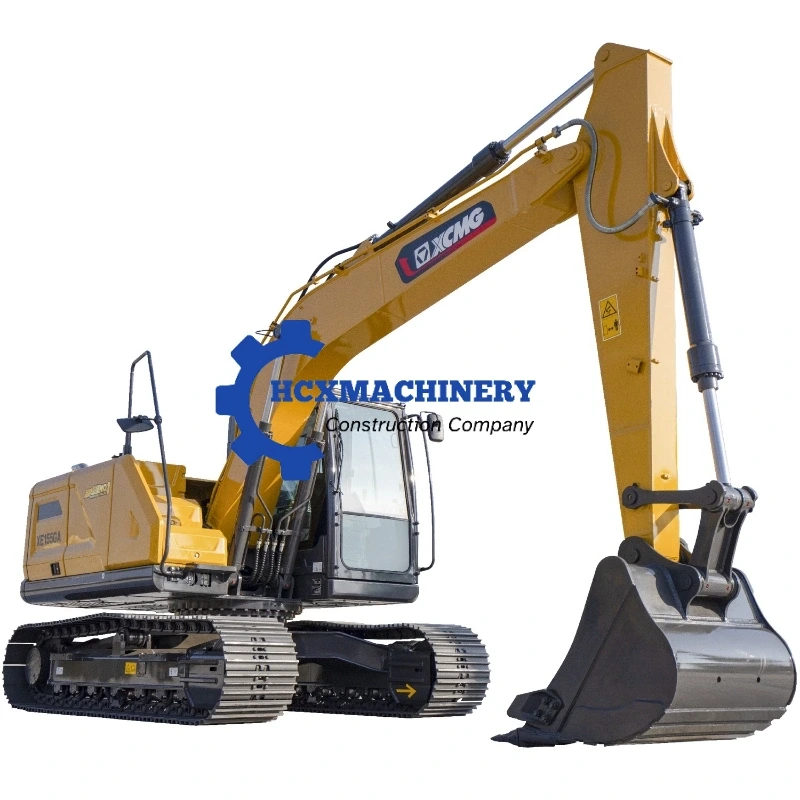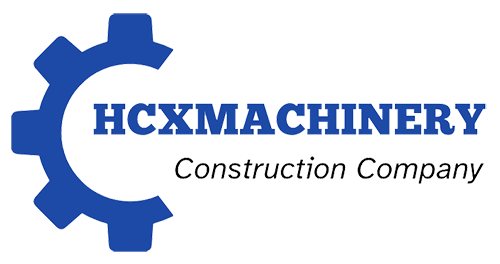Мировой спрос на подержанные экскаваторы продолжает расти благодаря их экономичности по сравнению с новыми моделями. Ищете ли вы небольшой экскаватор для легкого строительства средний экскаватор для городских проектов, или большой экскаватор для горных работ и тяжелых условий эксплуатации, покупка подержанных машин может быть разумным вложением средств - если вы знаете, что проверять.
Однако, приобретая Гусеничный экскаватор с гидравлической системой требует тщательного осмотра, чтобы избежать дорогостоящего ремонта и простоя. В этом руководстве вы узнаете, как 5 наиболее важных точек проверки чтобы гарантировать, что вы получите надежную машину по лучшей цене.

1. Осмотрите ходовую часть (гусеницы, ролики и звездочки)
Сайт ходовая часть это один из самых дорогих компонентов для ремонта или замены в гусеничный экскаватор. Поскольку на него приходится весь вес машины и он испытывает постоянное трение, износ неизбежен.
Что проверить:
- Гусеничные колодки и цепи: Ищите чрезмерный износ, трещины или отсутствующие звенья.
- Ролики и ролики: Убедитесь, что они вращаются плавно, без шатаний и скрежета.
- Звездочки: Проверьте, нет ли изношенных или сломанных зубьев, которые указывают на интенсивное использование.
- Втулки и штифты: Чрезмерный люфт означает, что они могут потребовать замены в ближайшее время.
Совет профессионала: Хорошо обслуживаемая ходовая часть должна иметь равномерный износ. Если одна сторона изношена сильнее, чем другая, возможно, у машины проблемы с центровкой.
2. Оцените гидравлическую систему (насосы, цилиндры и шланги)
Поскольку в большинстве современных экскаваторов используется гидравлическая системаЛюбые протечки или неисправности могут привести к дорогостоящему ремонту.
Что проверить:
- Гидравлические насосы: Прислушайтесь к необычным звукам (вой или скрежет), которые указывают на внутренний износ.
- Цилиндры: Ищите утечки масла, точечные повреждения или ржавчину на стержнях.
- Шланги и фитинги: Проверьте, нет ли трещин, выпуклостей или утечек.
- Гидравлическое масло: Темное или молочное масло свидетельствует о загрязнении или попадании воды.
Совет профессионала: Поработайте стрелой, манипулятором и ковшом, чтобы проверить отзывчивость гидравлики. Медленные или рывковые движения могут свидетельствовать о проблемах с насосом или клапаном.
3. Осмотрите двигатель (масло, охлаждающая жидкость и выхлопные газы)
Двигатель - это сердце любого подержанный экскаваторБудь то малый, средний или большой экскаватор. Неправильный уход за двигателем может привести к поломкам и дорогостоящему капитальному ремонту.
Что проверить:
- Состояние масла: Черное масло с примесью шлама указывает на плохое обслуживание.
- Уровень и качество охлаждающей жидкости: Бесцветная или маслянистая охлаждающая жидкость может свидетельствовать о прогоревшей прокладке головки.
- Выхлопной дым:
- Голубой дым = Сгорание масла (проблемы с поршневыми кольцами или уплотнениями клапанов).
- Белый дым = Утечка охлаждающей жидкости (неисправность прокладки головки).
- Черный дым = Проблемы с впрыском топлива.
- Время работы двигателя: Сравните показания счетчика с данными технического обслуживания. Большое количество часов не всегда плохо, если машина хорошо обслуживалась.
Совет профессионала: Запустите холодный двигатель - затрудненный запуск на холоде может указывать на проблемы с компрессией.
4. Проверьте раму и сварные швы (структурная целостность)
Погнутая или треснувшая рама может поставить под угрозу безопасность и производительность. Это особенно важно для большие экскаваторы используются в тяжелых условиях эксплуатации.
Что проверить:
- Трещины или ремонт: Ищите следы сварки или заплатки, которые могут указывать на прошлые повреждения.
- Стрела и рука: Проверьте, нет ли изгибов, трещин под напряжением или ржавчины в критических местах.
- Механизм качания: Убедитесь, что экскаватор вращается плавно, без чрезмерного люфта.
Совет профессионала: Используйте фонарик, чтобы осмотреть труднодоступные места, особенно в местах напряжения.
5. Проверка электроники и органов управления (работа и безопасность)
Современный подержанные экскаваторы часто оснащаются передовой электроникой. Неисправности могут привести к задержкам в работе или угрозе безопасности.
Что проверить:
- Контрольная реакция: Убедитесь, что джойстики и педали работают плавно и без задержек.
- Отображение и оповещения: Проверьте наличие кодов ошибок или предупреждающих индикаторов.
- AC & Heating: При наличии оборудования проверьте функции климат-контроля.
- Особенности безопасности: Убедитесь, что аварийные выключатели работают.
Совет профессионала: Возьмите с собой диагностический прибор (если это возможно) для сканирования на наличие скрытых кодов ошибок.
Бонус: Как проверить историю раскопок?
- Послужной список: Попросите предоставить журналы технического обслуживания, подтверждающие регулярную замену масла, фильтров и ремонт деталей.
- Отчет о проверке: Наймите стороннего инспектора для беспристрастной оценки.
- Предыдущее использование: Машины, используемые в коммунальном или сельском хозяйстве, часто содержатся лучше, чем те, которые были получены в результате сноса или добычи полезных ископаемых.
Заключение
Покупка подержанный экскаватор-есть ли маленький, средний, или большой экскаватор-может сэкономить вам тысячи, но только если вы избежите скрытых проблем. Сосредоточившись на этих 5 ключевых точек проверки (ходовая часть, гидравлика, двигатель, рама и электроника)Вы можете быть уверены в покупке.
Если вы ищете надежный Гусеничный экскаватор с гидравлической системойПокупайте автомобили у надежных дилеров, которые предоставляют гарантии и историю обслуживания.
Вам нужна помощь в поиске высококачественных подержанных экскаваторов для экспорта? Свяжитесь с нами сегодня, чтобы получить лучшие предложения на проверенные и сертифицированные машины!

